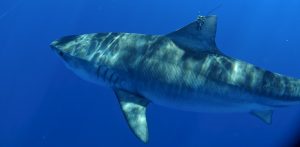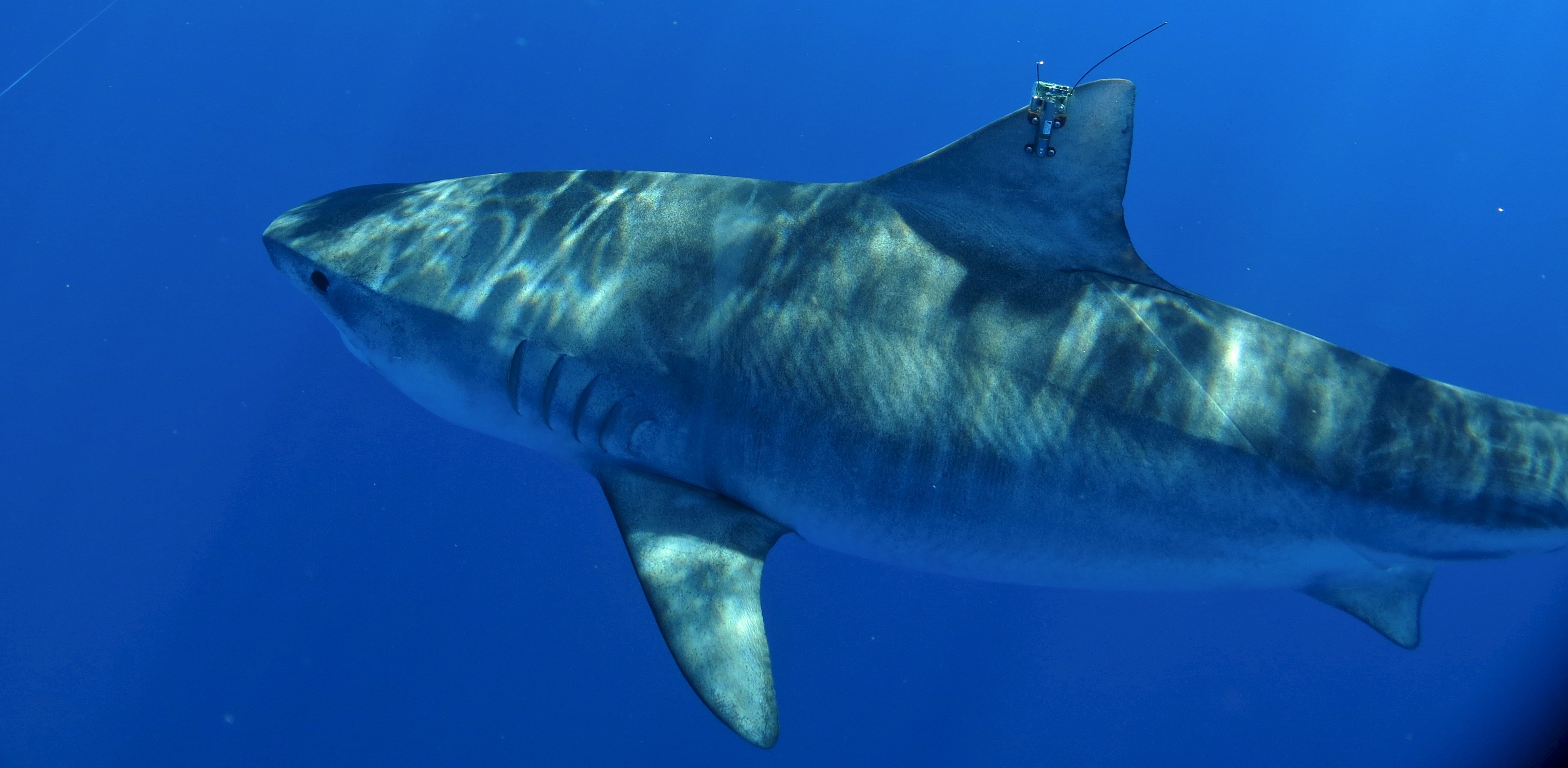All My Relations: Shark Stories
by Bryan Kamaoli Kuwada
The ocean is a dangerous place, and despite our touristic reputation as some sort of paradise, the seas around Ko Hawaiʻi Pae ʻĀina (the Hawaiian Islands) are no different. Sometimes when you are bobbing around on the surface of the ocean, whether surfing or swimming, you get the eery feeling that something is there in the dark depths, that you are still part of the food chain.
And it’s true. Manō, or sharks, actually abound in our waters. If you ever want to lose sleep, take a look at the tiger shark tracking website and see how many are swimming around, and those are just the ones that have been tagged. The spot I surf at has had two attacks and multiple sightings in the last month alone. It makes us cautious, but it doesn’t keep most of us out of the water. For Hawaiians, the call of the ocean is too strong, and we have a long history with sharks.

Some of our more well-known moʻolelo (story/history/account) regarding manō feature sharks who can become men, and those men often wear cloaks or capes of leaves or feathers to hide the shark jaw that is between their shoulder blades. One famous shark would meet travelers along the path to the sea and then warn them that the ocean there is particularly shark-infested, and if they did not heed his warning, he would take a shortcut to the beach and devour them once they went into the water.
The Hawaiian-language newspapers of the nineteenth century have accounts of Hawaiian sailors returning to shore holding onto the fins of sharks. There are also accounts of fisherman and divers fighting off aggressive sharks with the Hawaiian martial art known as lua. There is even the story of a dog jumping in the water and biting a shark. And before you begin to think that the Hawaiian sharks are just more laid back, the newspapers have traditional accounts of people being killed by sharks as well. An elder I used to hang out with from Niʻihau even said that when they would catch sharks to dry for food, you could always tell the maneaters because their meat would melt in the sun and not be good eating. Recounting all of this is merely to say that sharks are a common part of Hawaiian culture, both contemporarily and traditionally.
But luckily, according to our traditional moʻolelo, the people of Oʻahu, the island I live on, are protected from man-eating manō by the shark goddess Kaʻahupāhau and her brother Kahiʻukā who live in Puʻuloa, the area some know as Pearl Harbor today. This protection came about after Kaʻahupāhau killed a haughty chiefess named Papio in a fit of rage after Papio mistreated one of Kaʻahupāhau’s family attendants over the tribute of a lei being prepared for the goddess. The chiefess’s blood still stains the sands of Keoneʻula in ʻEwa until this day, but after killing her Kaʻahupāhau felt remorse for her hasty act and declared that everyone would be safe in her waters from that day forward.
That declaration was tested, however, by other man-eating sharks who came from the other islands to fight Kaʻahaupāhau and Kahiʻukā. Kepanilā was the most daunting maneater; his name meant Sun Blocker because he was so large that if he swam above you, you would only see darkness. If he had taken part in the war, Kaʻahupāhau’s side may not have been victorious because of his strength and ferocity, but he was so large that he ran aground in the channel between the islands and could not make it to the battle on Oʻahu. But even without Kepanilā, it was a terrible battle, and sharks switched between different forms to get the best advantage, but Kaʻahupāhau became an unbreakable net, ensnaring the maneaters and tossing them upon the shore to be killed by her human allies.
Kaʻahupāhau ended up victorious and defeated the maneaters, ensuring that her proclamation of safety in the waters around Oʻahu remained in force. Some say that that proclamation came to an end, however, in 1913 with the collapse of the Pearl Harbor drydock. The stated reason is underground pressure, but there are many accounts aserting that when construction was taking place, the elderly kahu (attendant/guardian) of Kaʻahupāhau warned the Navy to stop construction because they were building on the home of Kaʻahupāhau. They laughed him off. Some say that after the drydock collapsed, a large stone-lined cave was found below with the remains of a large shark inside of it.
If you have been to Hawaiʻi, you can feel the power of our moʻolelo written on the land. Our winds and rains still bear the names that they have for hundreds of years. Our place names tell stories of our ancestors and our gods, and it is likely that Kaʻahupāhau and the sharks from our old moʻolelo still roam the seas around Ko Hawaiʻi Pae ʻĀina and transform into human form to waylay unwary travelers. There is a lot of power in our old moʻolelo, but we are creating new moʻolelo all the time. And remember, every time you are floating in the dark depths of the vast ocean, what we call Moananuiākea, and you get the eerie feeling that a shadow made up of teeth and speed is swimming below you, stalking you from just out of your sight, be comforted that this is your chance to take part in a brand new shark story.


One Reply to “Monster Tales : Bryan Kamaoli Kuwada”
Comments are closed.